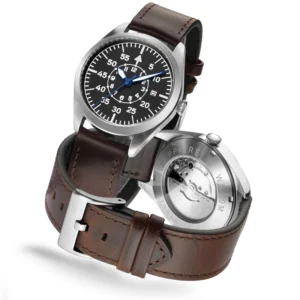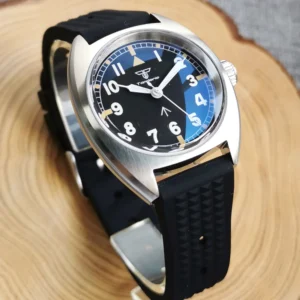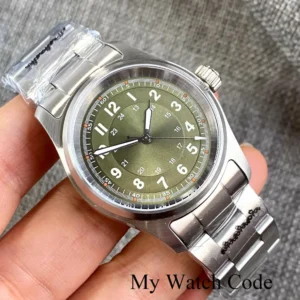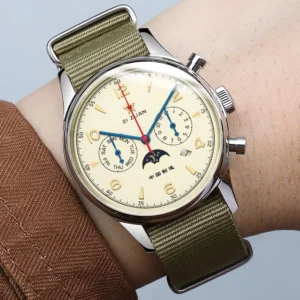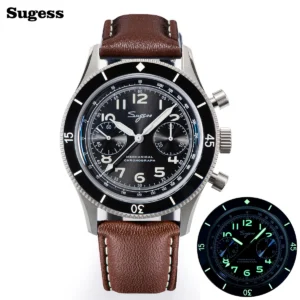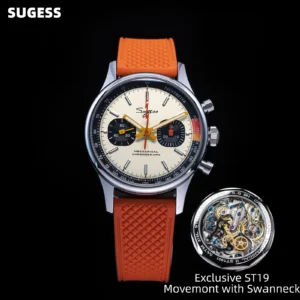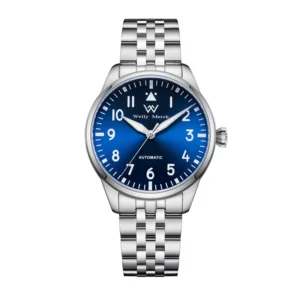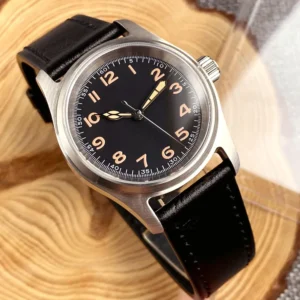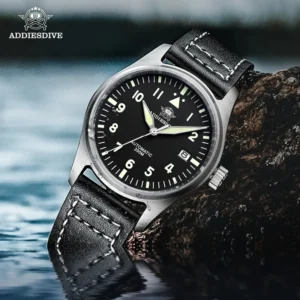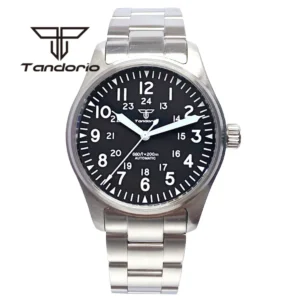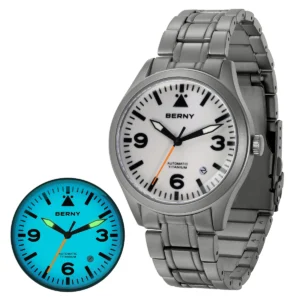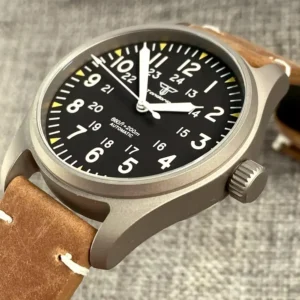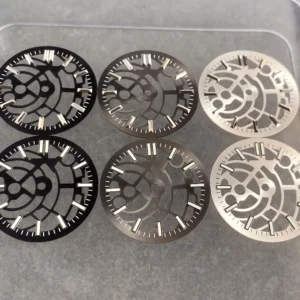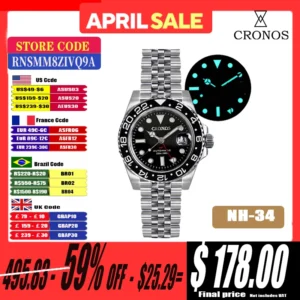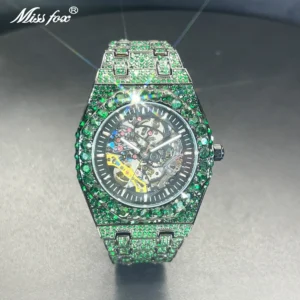Classic Pilot Watches
Own a piece of aviation history with classic pilot watches. Their bold, clear dials ensure easy reading and durable designs suit any journey, making them trusted cockpit companions.
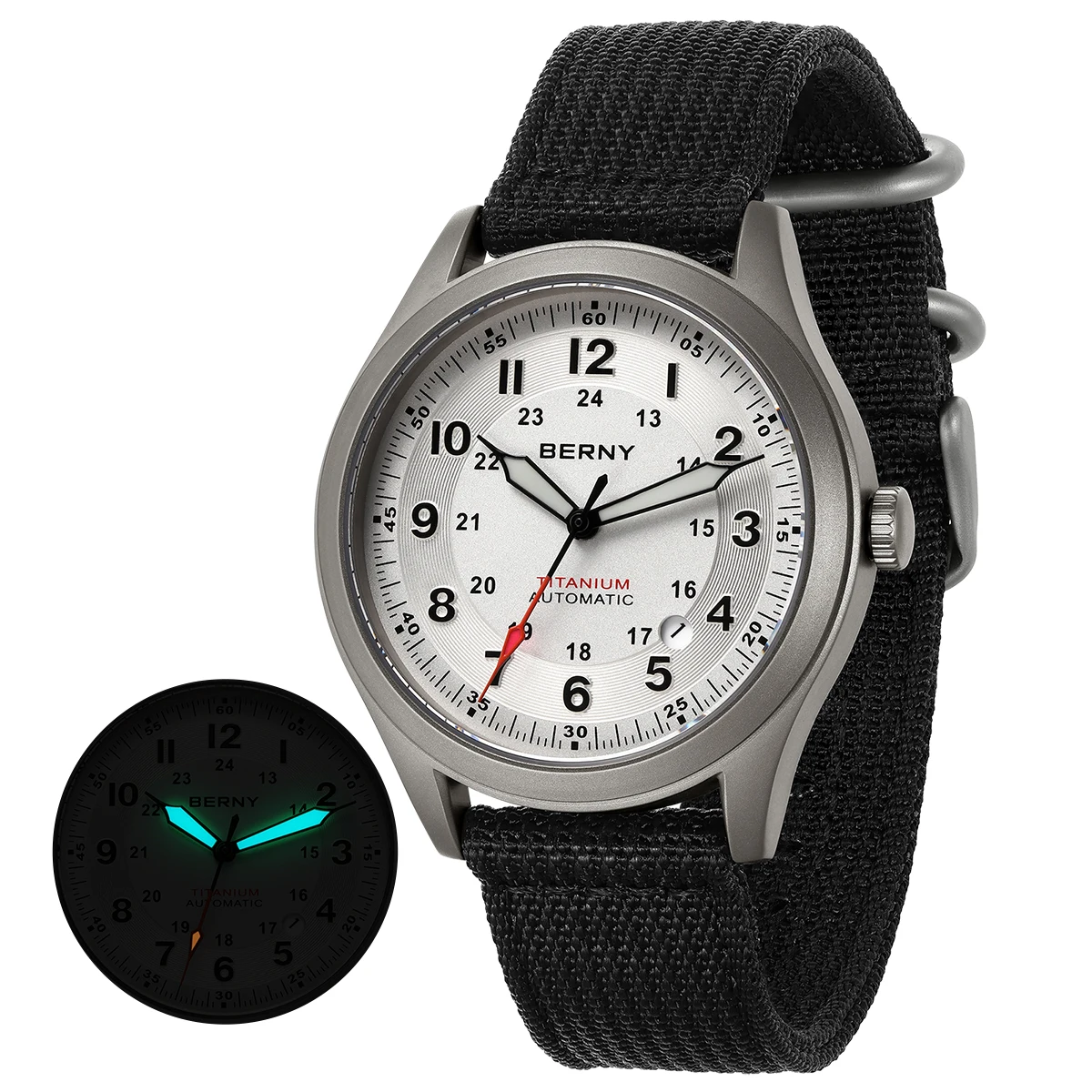
Showing 1–12 of 20 results
Classic Pilot Watches, Military Inspired Automatic Watches
Price range: $271.32 through $278.91 Select options This product has multiple variants. The options may be chosen on the product pageClassic Field Watches, Classic Pilot Watches, Professional Spec Dive Watches
Price range: $361.75 through $363.19 Select options This product has multiple variants. The options may be chosen on the product pageClassic Field Watches, Classic Pilot Watches, Military Inspired Automatic Watches, Professional Spec Dive Watches
Price range: $244.20 through $277.50 Select options This product has multiple variants. The options may be chosen on the product pageClassic Pilot Watches, Day Date Automatic Watches, Military Inspired Automatic Watches
$399.27 Select options This product has multiple variants. The options may be chosen on the product pageChronograph Pilot Watches, Classic Manual Wind Watches, Classic Pilot Watches
Price range: $1,690.75 through $1,756.03 Select options This product has multiple variants. The options may be chosen on the product pageChronograph Pilot Watches, Classic Pilot Watches, Military Inspired Automatic Watches
Price range: $1,218.15 through $1,506.47 Select options This product has multiple variants. The options may be chosen on the product pageClassic Pilot Watches, Classic Style Dive Watches, Professional Spec Dive Watches
$219.45 Select options This product has multiple variants. The options may be chosen on the product pageClassic Pilot Watches, Military Inspired Automatic Watches, Professional Spec Dive Watches
Price range: $234.95 through $340.40 Select options This product has multiple variants. The options may be chosen on the product pageClassic Automatic Dress Watches, Classic Pilot Watches, Classic Style Dive Watches
Price range: $464.68 through $491.06 Select options This product has multiple variants. The options may be chosen on the product pageClassic Pilot Watches, Day Date Automatic Watches, Professional Spec Dive Watches
Price range: $284.90 through $360.01 Select options This product has multiple variants. The options may be chosen on the product pageClassic Pilot Watches, Military Inspired Automatic Watches, Titanium Automatic Watches
Price range: $408.70 through $496.36 Select options This product has multiple variants. The options may be chosen on the product pageClassic Pilot Watches, Professional Spec Dive Watches, Titanium Automatic Watches
$352.24 Select options This product has multiple variants. The options may be chosen on the product page
Showing 1–12 of 20 results
The Heritage of Classic Pilot Watches: Aviation Timekeeping Excellence
Classic pilot watches represent a perfect marriage of history and functionality in the world of horology. Born from the early days of aviation when pilots needed reliable timekeeping instruments to navigate the skies, these timepieces evolved into essential flight tools. The earliest pilot watches emerged when brave aviators like Charles Lindbergh relied on precise timing for navigation and flight planning.
What makes these watches distinctive is their unwavering commitment to functionality. Every design element—from oversized dials to high-contrast numerals—serves a practical purpose. Yet beyond their utility, pilot watches have transcended their cockpit origins to become enduring symbols of adventure and precision in watchmaking. They stand as testament to an era when a timepiece wasn’t merely an accessory but a critical instrument upon which lives depended.
At Sharp Aspect, we celebrate these timepieces not just for their historical significance but for their enduring design excellence that continues to influence modern watchmaking.
Defining Characteristics: The Hallmarks of Classic Pilot Timepieces
Classic pilot watches are immediately recognizable by several distinctive features that set them apart from other timepiece categories. First and foremost is their exceptional legibility—a non-negotiable quality when split-second reading accuracy could mean the difference between successful navigation and getting lost.
This legibility is achieved through several design elements:
– Large, high-contrast dials with bold numerals
– Generous application of luminous material on hands and markers
– The iconic triangular marker at 12 o’clock for instant orientation
– Simple, uncluttered layouts prioritizing time-reading efficiency
The oversized crown—a hallmark feature—was purposefully designed to be operated while wearing thick flying gloves in unheated cockpits. Modern pilot watches preserve this design element even though today’s pilots rarely need such accommodation.
Type A and Type B Flieger dials represent two classic approaches to pilot watch design. Type A features Arabic numerals from 1-12, while Type B displays minutes prominently on the outer track with hours on an inner ring—each configuration offering specific advantages during flight operations.
These timepieces also typically feature robust cases built to withstand vibration and sudden pressure changes, along with anti-magnetic protection to maintain accuracy near aircraft instruments. While modern versions have evolved aesthetically, the core design principles remain remarkably faithful to their utilitarian origins.
Iconic Models: Legendary Timepieces That Defined the Category
The pilot watch category boasts several legendary timepieces that established the design language we recognize today. The original Flieger watches, commissioned for military aviators, set standards for legibility and functionality that continue to influence modern designs. These watches featured precise mechanical movements housed in substantial cases, often exceeding 40mm in diameter—unusually large for their era but necessary for at-a-glance readability.
The Big Pilot’s Watch, with its distinctive onion crown and straightforward dial layout, represents perhaps the most immediately recognizable pilot watch silhouette. Its oversized dimensions and clean aesthetic established a template that countless manufacturers continue to reference.
Navigation chronographs introduced slide-rule bezels that allowed pilots to perform crucial calculations without additional tools—an innovation that transformed watches from simple timekeepers into genuine flight instruments. These complex bezels enabled conversions between distance, fuel consumption, and flight time.
What makes these iconic models particularly special is their steadfast commitment to function above all else. Unlike many watch categories that evolved primarily through stylistic changes, pilot watches developed through practical innovations addressing real aviation challenges. This authentic utilitarian heritage gives them a credibility and purpose that continues to resonate with enthusiasts decades after their introduction.
Technical Excellence: The Engineering Behind Pilot Watches
Behind the distinctive appearance of pilot watches lies serious engineering focused on reliability and performance. Quality pilot watches typically feature robust automatic movements designed to maintain accuracy despite vibration and rapid altitude changes. These movements often undergo chronometer certification to ensure precision timing—critical when calculating navigation points or flight duration.
Case construction represents another area where pilot watches excel. Traditionally crafted from stainless steel or titanium, these cases provide excellent durability while protecting the movement from magnetic interference through soft-iron inner cages. This anti-magnetic protection remains relevant today, as cockpit instruments can still affect mechanical watch performance.
Crystal technology has evolved significantly from the shatterproof acrylic of early models to today’s sapphire crystals with anti-reflective coatings that enhance readability in variable lighting conditions. Many feature specially treated glass that resists fogging during rapid altitude changes—a practical consideration when moving between pressurized cabin environments.
Shock resistance systems protect delicate movement components during turbulence, while screw-down crowns and reinforced case backs ensure water resistance—features that seem beyond aviation needs but speak to the overall engineering philosophy of creating timepieces ready for any challenge.
Functionality and Complications: Beyond Basic Timekeeping
While all pilot watches excel at clear time display, many feature additional complications that enhance their utility for aviation professionals and enthusiasts alike. Chronograph functions—essentially mechanical stopwatches—allow pilots to time flight legs, measure fuel consumption rates, or track elapsed mission time with precision.
GMT functionality represents another practical feature, enabling simultaneous tracking of multiple time zones—essential for international flights crossing various time boundaries. The additional GMT hand makes quick reference possible without complex calculations.
More sophisticated models incorporate slide rule bezels capable of performing mathematical calculations crucial for aviation. These analog computers can determine:
– Fuel consumption rates
– Climbing and descent times
– Distance conversions
– Speed calculations
Day/date complications provide additional practical information for pilots maintaining logbooks or planning multi-day journeys. These features blend seamlessly into pilot watch designs while enhancing their functionality beyond simple timekeeping.
What makes these complications particularly impressive is how they maintain the watches’ legibility and usability despite adding layers of information—a balancing act that demonstrates the thoughtful engineering behind these purpose-built timepieces.
Styling and Versatility: From Cockpit to Boardroom
The timeless design language of pilot watches has facilitated their transition from purely functional tools to versatile accessories that complement various settings and attire. Their clean aesthetics and purposeful design allow them to pair equally well with casual weekend wear or business attire.
Strap options significantly influence a pilot watch’s character and versatility:
– Leather straps in rich browns provide a vintage aviation aesthetic
– NATO straps offer durability and security while adding casual flair
– Stainless steel bracelets elevate the watch for more formal occasions
– Canvas straps respect the military heritage while ensuring comfort
The substantial case proportions that once served purely practical purposes now make a confident style statement, while high-contrast dials that enhanced cockpit readability provide a distinctive look in everyday settings. This successful crossover from specialized equipment to versatile accessory explains why pilot watches remain enduringly popular even among those who never enter a cockpit.
Heritage and Modern Interpretations: Tradition Meets Innovation
Today’s market offers both historically faithful reproductions and contemporary interpretations that honor tradition while incorporating modern advancements. Heritage models meticulously recreate vintage specifications, from movement architecture to dial typography, appealing to collectors who appreciate historical accuracy and the stories these timepieces tell.
Modern interpretations retain classic design elements while upgrading materials and mechanics. These contemporary versions might feature:
– Ceramic bezels for superior scratch resistance
– Silicon escapements for improved antimagnetic properties
– Advanced luminous compounds that glow brighter and longer
– Lightweight titanium cases that maintain strength while reducing weight
What makes the pilot watch category particularly special is how it maintains its identity through evolution. Unlike many watch styles that change radically with fashion, pilot watches retain their core design DNA while subtly incorporating technological advances—a testament to the enduring relevance of their original purpose-driven design.
How Do Pilot Watches Compare to Other Tool Watch Categories?
While dive watches prioritize water resistance and unidirectional timing bezels for underwater safety, pilot watches focus on legibility and navigation functionality. The former emphasize depth rating and luminosity, while the latter prioritize readable dials and calculation features.
Field watches typically feature more compact cases and prioritize durability for ground-based activities, whereas pilot watches tend to be larger with complications specific to aviation needs. Both categories share military heritage, but each evolved to address different operational requirements.
Many enthusiasts are drawn to multiple tool watch categories because each tells a unique story about human innovation and specialized needs. Pilot watches stand out for their distinctive aviation heritage and the way they combine sophisticated functionality with straightforward usability—a balance that explains their enduring appeal both in cockpits and daily life.

